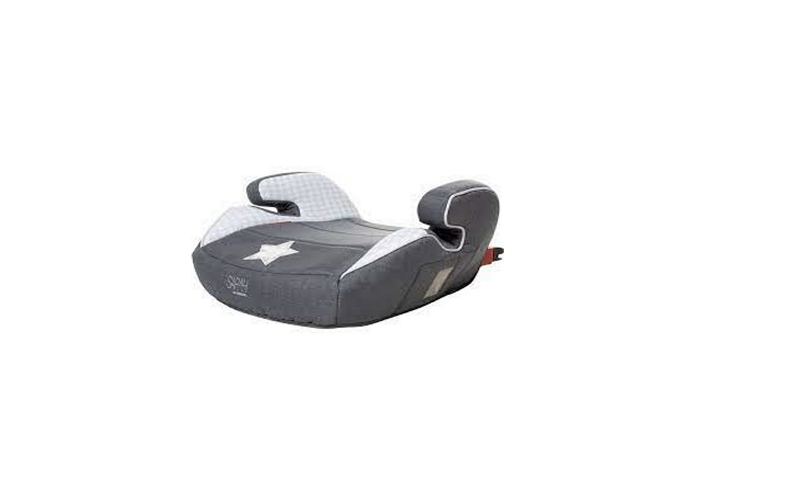In this blog post, you will learn What is a high back booster seat. A high back booster seat is a car safety belt-positioning device for children who are too small to use adult lap and shoulder belts.
It uses either an internal shield or detachable shield to act as a buffer between your child’s body and the vehicle’s buckles, making it easier for you (or them) to buckle up properly.

A high-back model can also reduce head excursion in certain types of frontal crashes compared with using only a regular adult lap/shoulder belt; however, there is no significant difference when compared with installing three-point harnesses instead of using just the standard combination lap/shoulder belt.
Children who weigh more than 80 pounds or are taller than 57 inches should continue to wear their own appropriate-sized seat belts.
Are child restraints required when travelling by air?
Yes, they must be secured in a child restraint system or an appropriate device if available even while on board an aircraft.
This law also applies to children under age two years old because infants may require extra attention from their own seat belt due to possible turbulence during the flight which can cause serious injuries especially they’re not properly restrained during takeoff and landing.
Can my 7-year-old use a backless booster seat?
Yes, your child can use a backless booster seat when they are at least 40 pounds and their shoulders reach the top harness slots in an upright position while sitting without slouching.
When properly used with the car’s lap and shoulder belt, a booster seat raises children so that vehicle safety belts fit them correctly. A high-back or no-back booster is usually recommended for optimal protection against injury from hot exhaust systems located undercarriage of most cars.
Should the baby seat go behind the driver or passenger?
One of the main features that distinguish child safety seats from adult seat belts is that, for kids under age 13 or so, it’s mandatory to use a car seat in your vehicle. The U.S. federal government mandates car and booster-seat laws differ by state; however, all states require either an infant carrier (for babies up to one year old) or forward-facing harnessed restraint (for children ages four through eight).
What is the age and weight for booster seats?
Booster seats are meant for children who have outgrown their harnessed car seat and need a booster to position the adult belt correctly over their shoulders, hips and thighs. The following is a guide by age:
– Birth to 12 months
– 20 pounds or more and one year of age, OR
– At least 20 inches tall.
– 30 to 100 pounds. Most kids will need a belt-positioning booster seat until they are four feet nine inches tall which is between the ages of 11 -12 years old. After this stage, you can use a seatbelt alone if it fits properly without slouching or leaning forward.
However, even up through age 13 most children still have an increased risk for injury in crashes so many parents choose to continue using boosters with lap/shoulder belts as long as their child remains within the height, weight and development guidelines issued by carseat manufacturers (usually around 50 lbs). This allows for ample time to fit your growing child with a seatbelt for an extended period of time and still be reasonably safe.
– 40 to 100 pounds. Most kids will need a belt-positioning booster seat until they are 57 inches tall which is between the ages of 15 – 17 years old. After this stage, you can use a seatbelt alone if it fits properly without slouching or leaning forward.
– 40 to 120 pounds and at least 57 inches tall (four feet nine inches). Most kids will need a belt-positioning booster seat until they are at least 145 lbs which are between the ages of 15 – 18 years old.
However, even up through age 18 most children still have an increased risk for injury in crashes so many parents choose to continue using boosters with lap/shoulder belts as long as their child remains within the height and weight guidelines issued by carseat manufacturers (usually around 100 lbs) but also consider additional factors such as bone density, muscular development, etc when assessing your child’s readiness for no longer needing a booster seat.
How much does your child need to weigh to be in a booster seat?
Booster seats are important because they make the seat belt fit your child correctly. Many times children can be in a forward-facing carseat as young as two years old, but you should consult with your pediatrician to see what is best for your child and their current weight/height before moving them up into it.
Typically most kids will begin using booster seats around age four or five when they weigh between 40 and 80 pounds, but again this varies depending on where you live!
It’s not about whether or not they can physically sit in a booster – if they meet the weight requirement then it’s safe for them to use one even if other factors aren’t right yet (like shoulder height).
If at all possible, wait until your child reaches the top weight before moving them into a booster seat.
What are the 4 types of booster seats?
When your child reaches the required height and weight limit, it’s time to move on to a booster seat. These types of seats help position your child so they can use their car safety belt properly.
Some different types of these boosters include high-back style, backless styles for older kids because they are easier to buckle up in, harnesses that stay in place until children outgrow them around age eight or nine years old.
